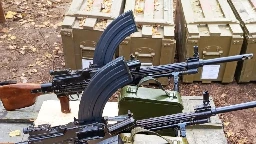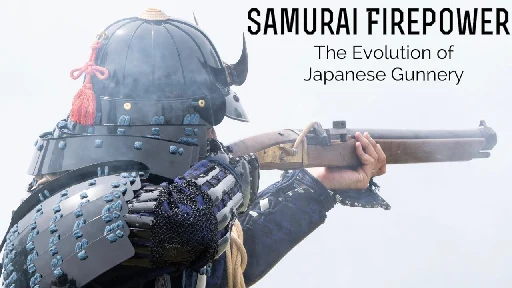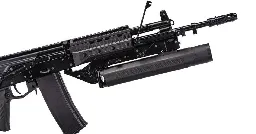
Forgotten Weapons
- Museum Mega Thread
Hey, this is going to become a list of firearms related museums across the world it'll will be linked in the side bar.
If there's any museums you know comment them and I'll add them below. This is and will likely always be an incomplete list.
If you don't know any museums but you don't see your country represented let me know and we'll see if we can't find one to add.
Africa
Egypt 🇪🇬
- National Military Museum, Cairo
Ethiopia 🇪🇹
- National Museum, Addis Ababa
Kenya 🇰🇪
- National Museum of Kenya, Nairobi
South Africa 🇿🇦
- National Museum of Military History, Johannesburg
Tanzania 🇹🇿
- National Museum, Dar es Salaam
Asia
China 🇨🇳
- Military History Museum, Beijing
Japan 🇯🇵
- Edo Firearms Museum, Tokyo
- Pistol Museum, Tanegashima
Russia 🇷🇺
- Moscow Kremlin Museums, Moscow
- Tula State Museum of Arms, Tula
Singapore 🇸🇬
- Army Museum, Singapore
South Korea 🇰🇷
- Army Museum, Seoul
Vietnam 🇻🇳
- Military and War Museum, Ho Chi Minh
Europe
Austria 🇦🇹
- Neue Burg, Vienna
Belgium 🇧🇪
- Royal Museum of the Armed Forces and Military History, Brussels
France 🇫🇷
- *Mémorial de Caen, Normandy"
- Musée de l’Armée, Paris
Germany 🇩🇪
- Deutsches Historisches Museum, Berlin
- Waffenmuseum, Suhl
Italy 🇮🇹
- Museo Storico Italiano della Guerra, TN
Malta 🇲🇹
- Malta Time-Gun Museum, Valletta
Netherlands 🇳🇱
- Verzetsmuseum, Amsterdam
Poland 🇵🇱
- Museum of the Second World War, Gdańsk
- Warsaw Uprising Museum, Warszawa
Romania 🇷🇴
- Army Museum, Brașov
Spain 🇪🇸
- Casa de la Guerra, Barcelona
Sweden 🇸🇪
- Armémuseum, Stolkholm
- Eskilstuna Stadsmuseum, Eskilstuna
Ukraine 🇺🇦
- Baturyn Historic and Cultural Reserve - Museum of Hetmancy, Chernihiv
- Lviv Arsenal, Lviv
- National Museum-Preserve of Ukrainian Military Achievements, Kyiv
UK 🇬🇧
- Fitzwilliam Museum, Cambridge
- Imperial War Museum, London
- National Army Museum, London
- Royal Armories, Leeds + Portsmouth
North America
Canada 🇨🇦
- Historical Arms Museum, ON
- Evergreen Firearms Museum, MB
Mexico 🇲🇽
-
Museo del Ejército y Fuerza Aérea Mexicanos, Pueblo
-
Museo de la Revolución, Mexico City
US 🇺🇲
- Cody Firearms, WY
- JM Davis Arms and Historical Museum, OK
- John M. Browning Firearms Museum, UT
- The Metropolitan Museum of Art, NY
- Museum of Connecticut History (Colt Collection), CT
- NRA Museums, MO + VA + NM
- Springfield National Armory, MA
- Shooter's Outpost, NH
- Smithsonian, DC
South America
Argentina 🇦🇷
- National Arms Museum, Ciudad de Buenos Aires
Chile 🇨🇱
- Museo Histórico y Militar, Santiago
Paraguay
- Museo Militar, Asunción
Peru 🇵🇪
- Museo del Ejército, Lima
Uruguay 🇺🇾
- Museo Nacional de Armas, Montevideo
Oceania
Australia 🇦🇺
- Lithgow Small Arms Factory, NSW
- Duckfoot pistol, British, 1805-1813 AD

cross-posted from: https://lemmy.world/post/22126382
> https://www.invaluable.com/auction-lot/flintlock-ducks-foot-pistol-4a-c-5c3476d973 > >
- Daisy VL - A Caseless .22 (1968-69)

>The rifle resembled a typical spring-air rifle, but the 2000° hot, high-pressure air served not only to propel the projectile but also to ignite the propellant on the back of the V/L cartridge. The rifle uses a small, unique, and well designed part called an Obturator (obturator/ignitor) to compress the air as it is pushed through a tiny hole. This air is heated as it is pushed through the small hole enough to ignite the powder of the caseless round.
>The V/L guns and ammunition were discontinued in 1969 after the US Bureau of Alcohol, Tobacco, Firearms and Explosives ruled that they constituted a firearm, and Daisy, which was not licensed to manufacture firearms, decided to discontinue manufacture rather than become a firearms manufacturer. About 23,000 of the rifles were made before production ceased.
- Harmonica gun, USA, 19th century AD

cross-posted from: https://lemmy.world/post/22001033
> https://en.wikipedia.org/wiki/File:Ten_Shot_Harmonica_Pistol_9mm_(2).jpg > >
- US military bicycle with machine-gun, 1897 AD

https://www.copakeauction.com/featured-lot-taxonomy/cavalry/
- North Korea's Wacky Type 73 Machine Guns May Be Entering The Fight In Ukrainewww.twz.com North Korea's Wacky Type 73 Machine Guns May Be Entering The Fight In Ukraine
North Korea's Type 73s are a unique mashup of Soviet and Czech machine gun designs that are rare to see outside of the Hermit Kingdom

- Evolution of Webley Top Break Revolvers | Duelist1954

YouTube Video
Click to view this content.
Consider watching this video with FreeTube, a nifty open-source program that lets you watch YouTube videos without Google spying on your viewing habits!
Combined with Libredirect, which automatically opens youtube links in Freetube, it becomes really slick and effortless to use.
- Knuckleduster-revolver, Italian, 1870s AD

cross-posted from: https://lemmy.world/post/21609828
> https://www.invaluable.com/auction-lot/a-very-scarce-apache-delhaxe-type-pepperbox-revol-14-c-c5c434fa06
- Napoleon Bonaparte's personal gold-inlaid three-barreled pistol, 1803 AD

cross-posted from: https://lemmy.world/post/21568876
> https://www.bonhams.com/auctions/13562/lot/396/
- German combination weapon, hunting knife, wheellock pistol, and... calendar? True Germanic efficiency, 1528 AD-1546 AD

cross-posted from: https://lemmy.world/post/21553331
> https://www.metmuseum.org/art/collection/search/21963
- General Eisenhower with a German over-under combination rifle/shotgun with a scope, General Omar Bradley looks on, Europe, WW2, 1945

cross-posted from: https://lemmy.world/post/21475126
> https://www.gettyimages.com/detail/news-photo/commanding-general-of-u-s-army-europe-dwight-d-eisenhower-news-photo/98499198
- Enjoying Black Powder Episode 4: The Mauser Gewehr 1871

YouTube Video
Click to view this content.
Consider watching this video with FreeTube, a nifty open-source program that lets you watch YouTube videos without Google spying on your viewing habits!
Combined with Libredirect, which automatically opens youtube links in Freetube, it becomes really slick and effortless to use.
- A selection of wheellock pistols, including one with two locks, Germany?, ~1560 AD

cross-posted from: https://lemmy.world/post/20853476
> https://en.topwar.ru/163110-dospehi-i-oruzhie-oruzhejnoj-palaty-dvorca-dozhej.html
- Venetian 5-shot revolving ship cannon, 1621 AD

cross-posted from: https://lemmy.world/post/20803443
> https://en.topwar.ru/163110-dospehi-i-oruzhie-oruzhejnoj-palaty-dvorca-dozhej.html
- Evolution of the Whitney Navy Revolver

YouTube Video
Click to view this content.
Consider watching this video with FreeTube, a nifty open-source program that lets you watch YouTube videos without Google spying on your viewing habits!
Combined with Libredirect, which automatically opens youtube links in Freetube, it becomes really slick and effortless to use.
- Selection of swords from Benin, 19th century AD and earlier

cross-posted from: https://lemmy.world/post/20710509
- 1722 Experimental 3-pounder "secret" cannon of the Tula plant.

Experimental 3-pounder cannon of the Tula plant, 1722, Military-Historical Museum of Artillery, Engineers and Signal Corps, St. Petersburg.
The page I pulled this from does not have a ton of detailed technical information, and information is, at a search glance, not coming up with much more, but here are some selections from the page:
>The baptism of fire "secret" howitzers (as they began to be called) received in the battles of the Seven Years War, in battles with the army of Frederick II. In the battle of Gross-Jägersdorf, it is the secret howitzers that play the main role in the victory.
>However, the "secret" howitzers did not last long in service with the field artillery of the Russian army. Still, the survivability of the barrel was lower than that of conventional guns, and firing cannonballs from them was almost impossible.
- The First Anti-Aircraft Gun: The Ballon Kanone

Historical firearms article on the gun.
Highlights:
>The first untethered balloon flight took place on the 21st November 1783, with the first military use occurring during the French Revolutionary Wars. During the Franco-Prussian War the French again used observation balloons and when Prussian troops besieged Paris they became a vital lifeline out of the encircled city.
>[In response to balloons] Alfred Krupp developed a breech-loading 37mm canon mounted on a pedestal fixed to the bed of a carriage. Some sources describe the gun as a Ballonabwehrkanone or balloon defence gun. The canon had a stock and a folding sight fixed to the receiver. The canon could be rapidly deployed to open fire on the balloons as they crossed Prussian lines. Five French balloons were captured by the Prussians when they were forced to land, a further three were declared missing.
- 30-shot dual-barrel dual-cylinder revolver, possibly French, mid-late 19th century AD?

cross-posted from: https://lemmy.world/post/19780540
> https://www.rockislandauction.com/detail/62/1323/rare-and-unique-30shot-revolver
- Handguns of the 19th Century Irish Constabulary | Dualist1954

YouTube Video
Click to view this content.
- Police fear stolen museum guns could be made operationalwww.abc.net.au Police fear stolen museum guns could be made operational
Police are investigating the alleged theft of dozens of historical handguns from a weapons museum in the NSW Central West. Despite their age, the weapons could be made operational.

>... Lithgow Small Arms Factory Museum on August 25 after three people wearing balaclavas allegedly stole 27 handguns worth an estimated $200,000.
- Steel crossbow and barreled crossbow ('Slurbow'), Germany, 17th century AD

cross-posted from: https://lemmy.world/post/19343315
> https://www.christies.com/lot/a-fine-german-slurbow-dated-1657-5509843/ > > https://www.christies.com/en/lot/lot-5509842
- Alcoholic Ammo - Gurevich Revolver [1944]

This 5 shot 7.62 caliber double action revolver is actually suppressed by its unique cartridge design.
When fired expanding gases from the gunpowder pushed a plug forward which inturn pushed the liquid solution (60% alcohol 40% glycerol). This incompressible solution pushed on the bullet to launch it out of the revolver's barrel. The gases were contained in the cartridge preventing the typical sound report of a gunshot. And the liquid would follow the subsonic bullet out of the barrel as well.
https://guns.fandom.com/wiki/Gurevich_silent_revolver
- Samurai Firepower - A Matchlock Samurai Documentary [16:49]

YouTube Video
Click to view this content.
- US Military 25m ALT-C Qualification Course... With An Open Bolt Sterling Mk.4 / L2A3?

YouTube Video
Click to view this content.
- Ballistics and cartridges of the US smooth bore musket of the 1850-1860s

YouTube Video
Click to view this content.
- GP-46: New Russian underbarrel grenade launcher (40x46mm)www.thefirearmblog.com The New Russian GP-46 Underbarrel Grenade Launcher (40x46mm)
Kalashnikov Concern released a new AK underbarrel grenade launcher called GP-46 (ГП-46).The new launcher is chambered in 40x46mm.Yes, that’s the NATO 40mm low-velocity round, not the Russian 40mm caseless round used in other GP series of underbarrel grenade launchers like the GP-25, GP-30, and GP-34...

- (Pistol) - Chinese Mauser C96

This Chinese production C96 Broomhandle pistol is found in the collection of the UK's Royal Armouries. Curator Jonathan Ferguson showed it off recently in this video briefly.
It notably the word pistol engraved on the side where it should say Mauser. Just in case you couldn't tell I suppose.
- Benelli Now Marking Anti-Drone Variant of their M4 Shotgun

https://armyrecognition.com/news/army-news/army-news-2024/benelli-introduce-new-rifle-as-solution-against-uav-during-battle
While it seems to lack any really novel new features it definitely is interesting seeing major manufacturers pivoting with FPV drones taking over the modern battlefield.
- Kalthoff 30-Shot Flintlock: The First Repeating Firearm Used in War (1659)

>The first repeating rifle used in combat by a military force was a flintlock system developed by the Kalthoff brothers. It was adopted in the 1640s by the Danish Royal Guard, who purchased a bit more than 100 of the guns, and used them successfully in the Siege of Copenhagen in 1659. The Kalthoff is a .54 caliber flintlock rifle with a magazine of 30 balls under the barrel and a powder storage compartment in the buttstock. A lever under the action is rotated forward 180 degrees and then back to completely reload the rifle – this action loads a ball into the chamber, seats it fully in place, loads powder behind it, primes the pan, cocks the hammer, and closes the frizzen. This was an amazing amount of firepower in the mid-1600s, and the mechanism in the gun is brilliant.
>The Kalthoff brothers (Peter, Mathias, Caspar, Henrik, and William) spread out across Europe working for many royal courts although it was in Denmark where their gun saw the most substantial military use. The system would lead to other repeating flintlock designs like the Lorenzoni, but these did not really meet the quality of the original Kalthoffs (in my opinion). However, the system was very expensive to make and rather fragile to use. By 1696 the Danes had taken them out of service in favor of simpler and more durable designs.
https://youtu.be/ghKrbNpqQoY









